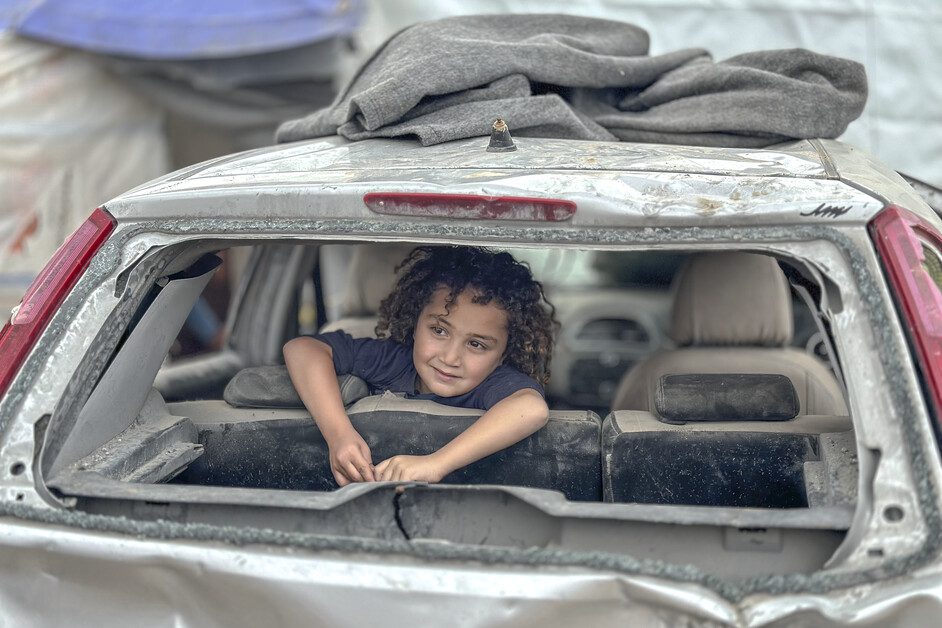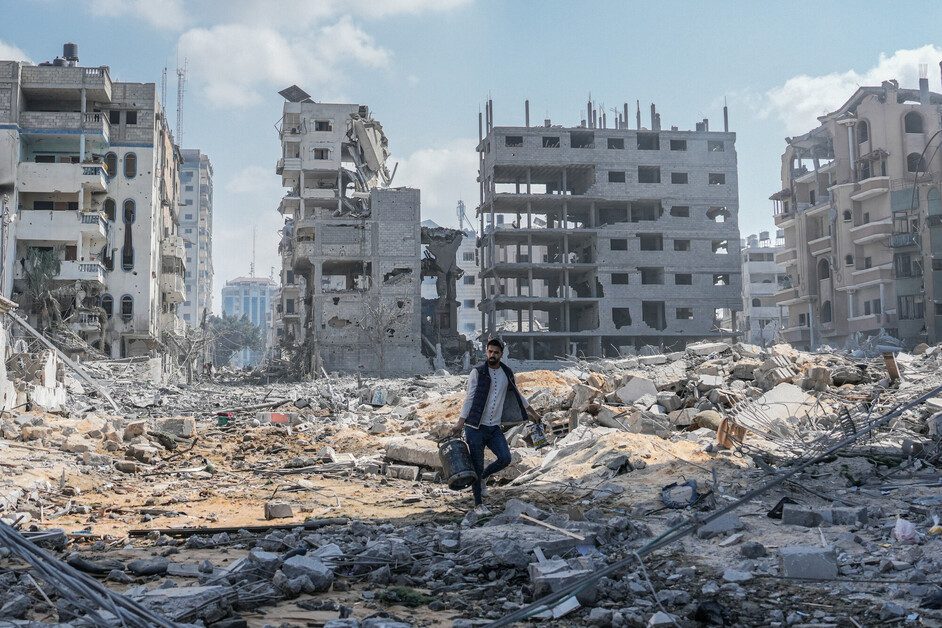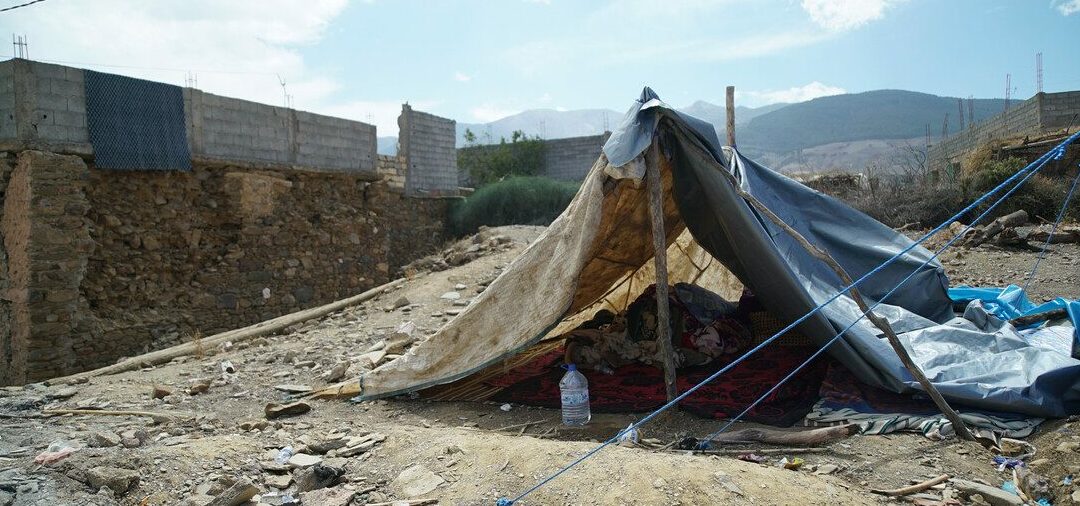Over two months of relentless bombing has turned life for people in Gaza into “hell on earth”. Displacement, hunger, lack of medical care and clean water, and the onset of winter are stretching the coping abilities of children and their families to the absolute limit. A staggering 1.9 million people have been displaced. At least 18,800 people have been killed—the Ministry of Health has been unable to update the death toll for the past few days, and many bodies that remain trapped under the rubble are not counted. Approximately 51,000 people are reported injured and thousands more are still missing.
We have gathered seven facts to help you better understand what this war means for the Palestinians in Gaza.
1. This is the deadliest conflict for children in the world
In times of war, it is often children and mothers who are most affected by the fighting. The hostilities in the Gaza Strip have had an especially catastrophic impact on children and have killed an average of over 110 children every day since October 7th. In total, more than 7,700 children have reportedly been killed, 40 per cent of reported fatalities—more than in all major global conflicts combined in 2022.
2. Families have no homes to go back to
1.9 million people, nearly 85 per cent of the population, have been displaced since October 7th. Families have been ordered to move—desperate to escape the violence and destruction and find the basic necessities to survive. Most of them have had to flee multiple times, like Alaa and her children. “We lived in four different places since the war started.”
Ever since I first saw my children’s little faces, I’ve wanted nothing else than to keep them safe and healthy. Now, in the blink of an eye, the only thing I can tell them is to run faster.
– Alaa.
Most people have no home to go back to as around 60 per cent of all houses in Gaza are estimated to have been either damaged or destroyed. Our colleague Saaed, CARE Gaza’s Emergency Coordinator, was able to speak to a friend during the seven-day truce in late November who could check on his home in Gaza City.
“He told me that our house is completely destroyed due to airstrikes. It makes me very sad to hear that the place where we raised a family for so many years has been reduced to nothing. All our assets are lost.”
Almost 1.3 million Palestinians now live in just 155 UNRWA shelters. Shelters in middle and southern Gaza, the area most people fled to ahead of advancing military operations, are, on average, hosting more than four times their capacity. Overcrowded shelters lack privacy or means to retain dignity and increase the risk of gender-based violence and sexual exploitation and abuse against women and girls. Others have found refuge with family, often sharing small rooms with 30 or more people. Increasingly, families are setting up tents in open areas, while many others have lost so much and have no other options; they are forced to sleep on the street.
Since the end of the truce, the levels of bombardment are worse than ever.
“We were told to leave our homes because the area will be hit by airstrikes. But we don’t know where else to go; there is nowhere we can go,” our colleague Salwa told us.
Very few areas in Gaza are untouched by the fighting, available spaces are shrinking every minute, and those spaces lack the food, water, shelter, and sanitation needed for survival. Nowhere in Gaza is safe, or even livable.


A child sits in a partially destroyed car while his family uses it as a shelter in Nuseirat refugee camp in Gaza. 2023 Grayscale Media/CARE
3. Education? A forgotten dream of the past
Almost half of the 2.3 million people in the Gaza Strip are under the age of 18.
In the current war, none of these children can receive any education at school, with many forced to use school buildings as a shelter. Additionally, 70 per cent of all school buildings—342 in total—have been damaged in the fighting, including those sheltering children and their families. Instead of playing or attending school, children are helping their families find basic necessities while coping with trauma from losing relatives.
“Education is a forgotten dream for children terrified this day might be their last,” says Aaron Brent, CARE’s Acting Country Director for the West Bank and Gaza.
“Psychological trauma has reached unprecedented highs. Mothers are telling us their children have stopped speaking or eating because of what they have seen and lived through. Others are crying and screaming with every loud sound they hear.”
Even before the current war, 15 years of blockade and conflict had horrific consequences for the psychological well-being of children in Gaza. Now, CARE and other humanitarian organizations fear an entire generation of children’s lives are dictated by fear, distress, and mourning.


A Palestinian man displaced by the Israeli bombardment of the Gaza Strip stands in a tent-camp in Khan Younis, in Southern Gaza Strip. © 2023 Grayscale Media/CARE
4. Destroyed infrastructure: Gaza has become unrecognizable
60 per cent of the Gaza strip has been flattened to the ground.
Homes, hospitals, schools and other critical infrastructure, such as water networks, sanitation facilities and grain mills have been destroyed or damaged. Only eight out of 36 hospitals and medical facilities are partly operational, and at least 286 health workers have been killed. For over two months, the Gaza Strip has been cut off from all electricity, and fuel reserves for its only power plant were depleted.
“Our team has spoken to doctors who must perform C-sections without anesthesia and see mothers who lose their babies right after giving birth because there is no power to run incubators that could keep them alive,” said Hiba Tibi, CARE’s Acting Deputy Regional Director for the Middle East and North Africa.
Tens of thousands of wounded people and 180 mothers giving birth every day are left without safe medical or delivery assistance. The few hospitals that are still running have more than double the number of people in intensive care units than their capacity. Hospitals are also sheltering thousands of displaced people


Destroyed houses are seen in the al-Rimal neighborhood of Gaza City, following several airstrikes. Grayscale Media/CARE
5. Silent killers are threatening survivors’ lives
Missiles and airstrikes are not the only killers in Gaza. Malnutrition, cold, and lack of clean water and hygiene, all caused by the siege, are a deadly combination.
CARE is already seeing a significant spread of disease infecting and killing those who have survived the bombing and airstrikes. Many people are forced to drink unsafe water. Dehydration and waterborne diseases are a growing threat, especially among those living in makeshift tents in the open. In such dire conditions, more people could die from disease than the bombings. Diarrhea, chicken pox, and scabies are on the rise, especially endangering the health of small children without medicine and amid horrific sanitation conditions. With cold nights and heavy rains drenching clothes and mattresses, hypothermia becomes a deadly threat for the youngest.
“Lack of medical care, hygiene, and high levels of malnutrition while living in overcrowded shelters are a poisonous mix, and we fear the numbers of women and children dying of otherwise preventable and treatable diseases will rise.”
– Hiba Tibi, CARE’s Acting Deputy Regional Director for the Middle East and North Africa
6. Famine is now a real risk
According to the World Food Programme, there is a high risk of famine and cases of dehydration and malnutrition are increasing rapidly. The situation has further deteriorated since the truce ended with thousands more people needing to flee to areas that don’t have enough food and water for survival. Up to half of all displaced people report going to sleep hungry, and 44 percent report “very severe hunger levels.” Our colleague Salwa told us she and her family are surviving on canned food, and have waited in line for hours to buy cooking gas. Food prices are skyrocketing, and families cannot afford to buy fresh produce if it is available at all.
7. Aid agencies’ hands are tied, and humanitarian workers are dying every day
Prior to October 7th, around 500 truckloads entered Gaza every day—a combination of aid and commercial traffic. Now, only a few dozen trucks per day have been permitted to enter the enclave, and with such extreme humanitarian needs, more support is needed than ever. Lack of fuel, communication blackouts, and constant bombing and airstrikes make aid delivery difficult to impossible for those in need. More than 135 aid workers have been killed since October 7th.




